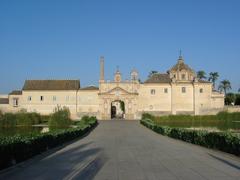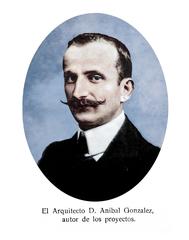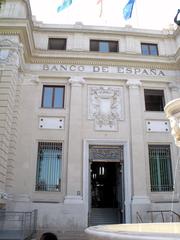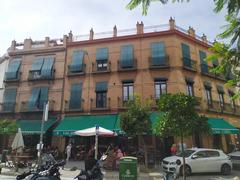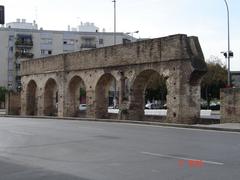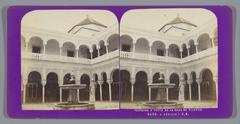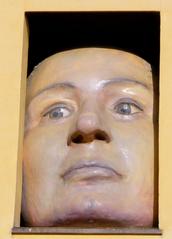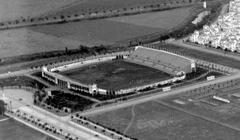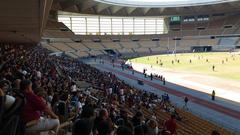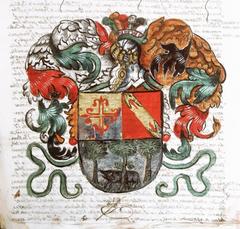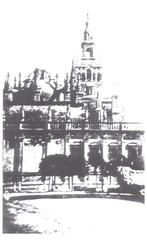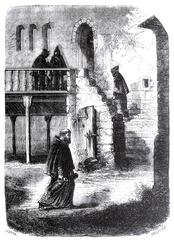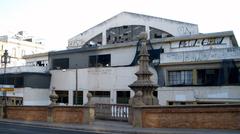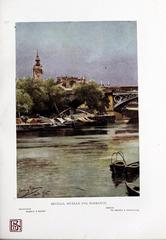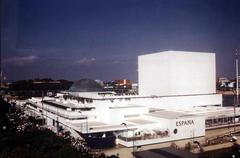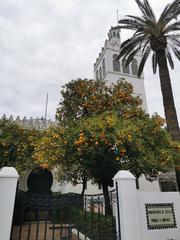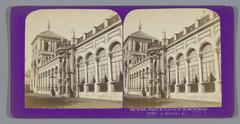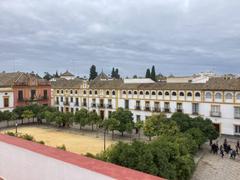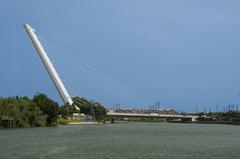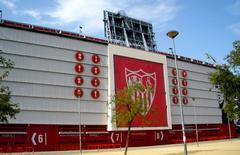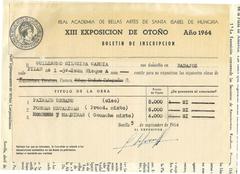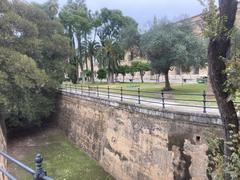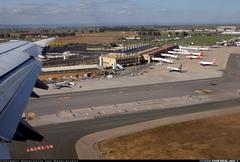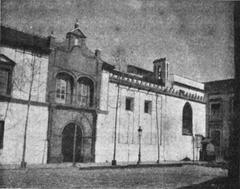Basílica de la Macarena Seville: Visiting Hours, Tickets, and Travel Guide
Date: 04/07/2025
Introduction
Nestled in Seville’s historic La Macarena district, the Basílica de la Macarena is a profound symbol of Andalusian faith, artistry, and community. Built in the mid-20th century to house the venerated image of the Virgen de la Esperanza Macarena, the basilica is the spiritual heart of one of Spain’s most renowned Holy Week processions. Its origins are deeply tied to the Hermandad de la Esperanza Macarena, a brotherhood established in the late 16th century, whose devotion and resilience led to the basilica’s construction after their original chapel was lost during the Spanish Civil War. Designed by Aurelio Gómez Millán, its neo-Baroque architecture and rich artistic heritage make it a must-visit for anyone seeking to experience Seville’s living traditions (The Catholic Travel Guide, Hermandad de la Macarena).
Table of Contents
- Origins and Early History
- Construction and Architectural Features
- The Virgen de la Esperanza Macarena
- Basilica’s Status and Holy Week Traditions
- The Macarena Neighborhood
- Restoration and Preservation
- Visiting Hours, Tickets, and Accessibility
- Nearby Attractions and Travel Tips
- Frequently Asked Questions (FAQ)
- Summary & Call to Action
- References
Origins and Early History
The story of the Basílica de la Macarena is inseparable from the Hermandad de la Esperanza Macarena. Founded in 1595, the brotherhood’s devotion centers on the enigmatic statue of the Virgin, attributed to Pedro Roldán or his workshop. Initially housed in the Parish of San Gil, the statue survived the destruction of its chapel during the Spanish Civil War in 1936, prompting the community to erect a new and grander sanctuary (History of EU).
Construction and Architectural Features
Construction of the current basilica began in the late 1940s, culminating in its consecration in 1949. The architect, Aurelio Gómez Millán, fused Andalusian Baroque elements with regional flair. The building features a single nave with a barrel vault, side chapels, and a porticoed entrance crowned by a statue symbolizing the virtue of Hope. Inside, the basilica dazzles with multicolored marble, frescoes by Rafael Rodríguez, and gilded wooden altarpieces crafted by the Juan Pérez Calvo workshop (Hermandad de la Macarena, History of EU).
The facade’s white and ochre tones are typical of Seville, while the central dome, adorned with green-glazed ceramic tiles, is a nod to Mudéjar influence. The neighboring bell tower and the adjacent historic Macarena Arch create a striking architectural ensemble (Andalucia.org).
The Virgen de la Esperanza Macarena
At the heart of the basilica stands the revered statue of the Virgen de la Esperanza Macarena, renowned for her expressive face, diamond tears, and elaborate golden crown. The statue, dating to the 17th century, has undergone significant restorations and is a symbol of hope and consolation for Sevillians. She is also considered the patroness of bullfighters and Spanish Gypsies, reflecting her deep integration into local culture (The Catholic Travel Guide, History of EU).
Basilica’s Status and Holy Week Traditions
In 1966, the basilica became Seville’s first church to receive the title of Minor Basilica, granted by Pope Paul VI (Sevilla Secreta). The basilica is the epicenter of Seville’s Semana Santa (Holy Week) celebrations. Every Good Friday, the statue of the Virgin is carried through the streets in an elaborate 12-hour procession, accompanied by thousands of devotees. The paso (float) is famed for its lavish decoration and is a masterpiece of Spanish religious art (The Catholic Travel Guide).
The Macarena Neighborhood
The Macarena district, known for its authenticity and vibrant local culture, is home to the basilica and the historic Arco de la Macarena, a remnant of Seville’s 12th-century city walls. The area’s history predates the Virgin; some sources suggest the neighborhood’s name comes from Macaria, daughter of Hercules (Sevilla Secreta). The district also features traditional tapas bars, artisan shops, and colorful markets.
Restoration and Preservation
Ongoing restoration and preservation are central to the basilica’s mission. The “Treasury” museum displays relics, robes, and artifacts of the Hermandad, while expert efforts maintain the sanctuary’s treasures for future generations (note.com).
Visiting Hours, Tickets, and Accessibility
Visiting Hours:
The basilica is generally open Monday to Saturday from 10:00 AM to 1:00 PM and 5:00 PM to 8:00 PM, and Sundays/holidays from 10:00 AM to 1:30 PM. During major events like Semana Santa, hours may vary—always check the official website before visiting.
Tickets:
Entry to the main sanctuary is free. Museum admission is around €5 for adults, with discounts available. Guided tours can be booked through the basilica or reputable agencies (WhatSevilla, Trip.com).
Accessibility:
The basilica is wheelchair accessible, with ramps and adapted facilities. Visitor services include restrooms, an information desk, and a gift shop.
Nearby Attractions and Travel Tips
- Arco de la Macarena: Medieval city gate adjacent to the basilica.
- Hospital de las Cinco Llagas: Now the Andalusian Parliament, right across the street.
- Murallas del Casco Antiguo: Best-preserved section of Seville’s city walls.
- Mercado de la Feria: Lively local market nearby.
Tips:
- Wear comfortable shoes for cobblestone streets.
- Early mornings or late afternoons are quieter.
- The basilica is easily reached by bus (lines C1, C2, 13) or taxi.
- Dress modestly and observe silence inside.
Frequently Asked Questions (FAQ)
Q: What are the basilica’s visiting hours?
A: Monday–Saturday, 10:00–13:00 and 17:00–20:00; Sundays/holidays, 10:00–13:30. Check the official site for updates.
Q: Is there an admission fee?
A: Entry to the basilica is free; museum admission is about €5.
Q: Is the site accessible for people with disabilities?
A: Yes, ramps and accessible facilities are available.
Q: Are photos allowed?
A: Photography is permitted except during services; avoid flash and tripods.
Q: Are guided tours available?
A: Yes, through the basilica and local tour agencies.
Q: What’s the best time to visit?
A: Weekday mornings or outside major religious holidays are less crowded.
Summary and Call to Action
The Basílica de la Macarena is more than a monument—it is a living center of faith, history, and Sevillian identity. Its architectural beauty, the moving devotion to La Esperanza Macarena, and its integral role in Holy Week make it a highlight of any visit to Seville. Plan your trip around the visiting hours, consider a guided tour, and explore the rich neighborhood that surrounds this iconic sanctuary.
For up-to-date information, guided tour bookings, and special events, visit the Hermandad de la Macarena’s official website. For more travel inspiration, download the Audiala app and follow our social media channels.
